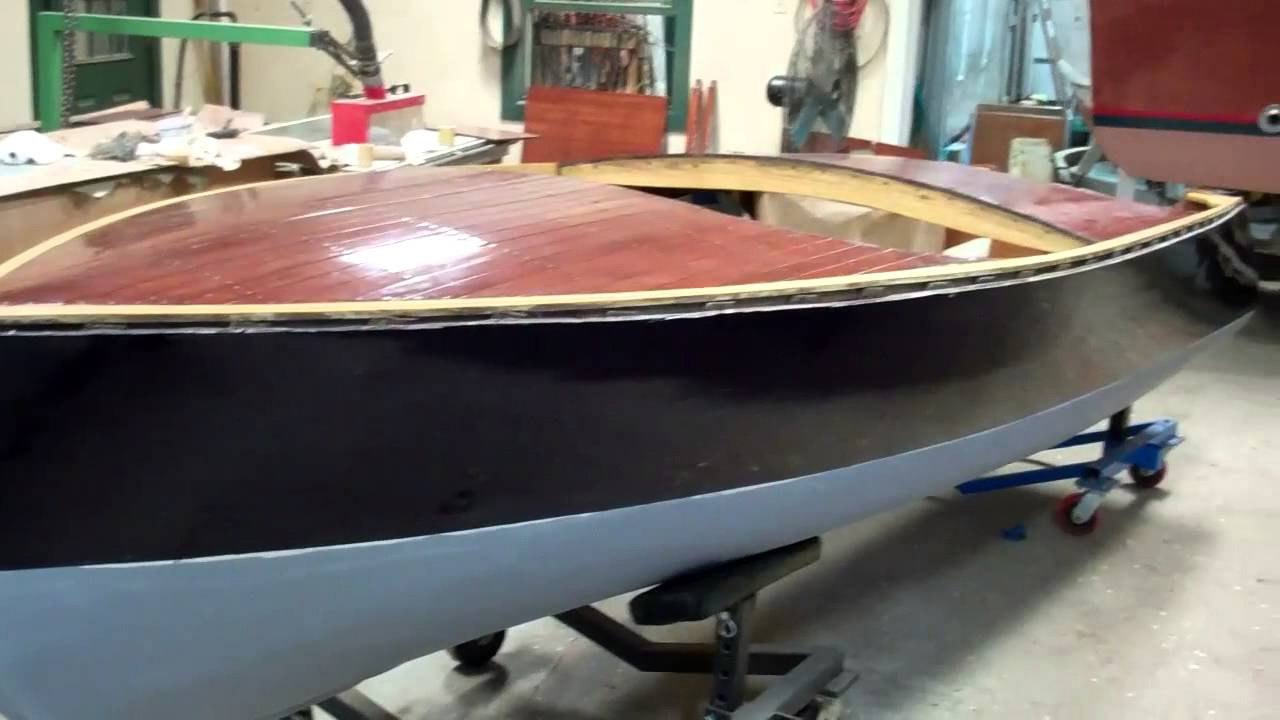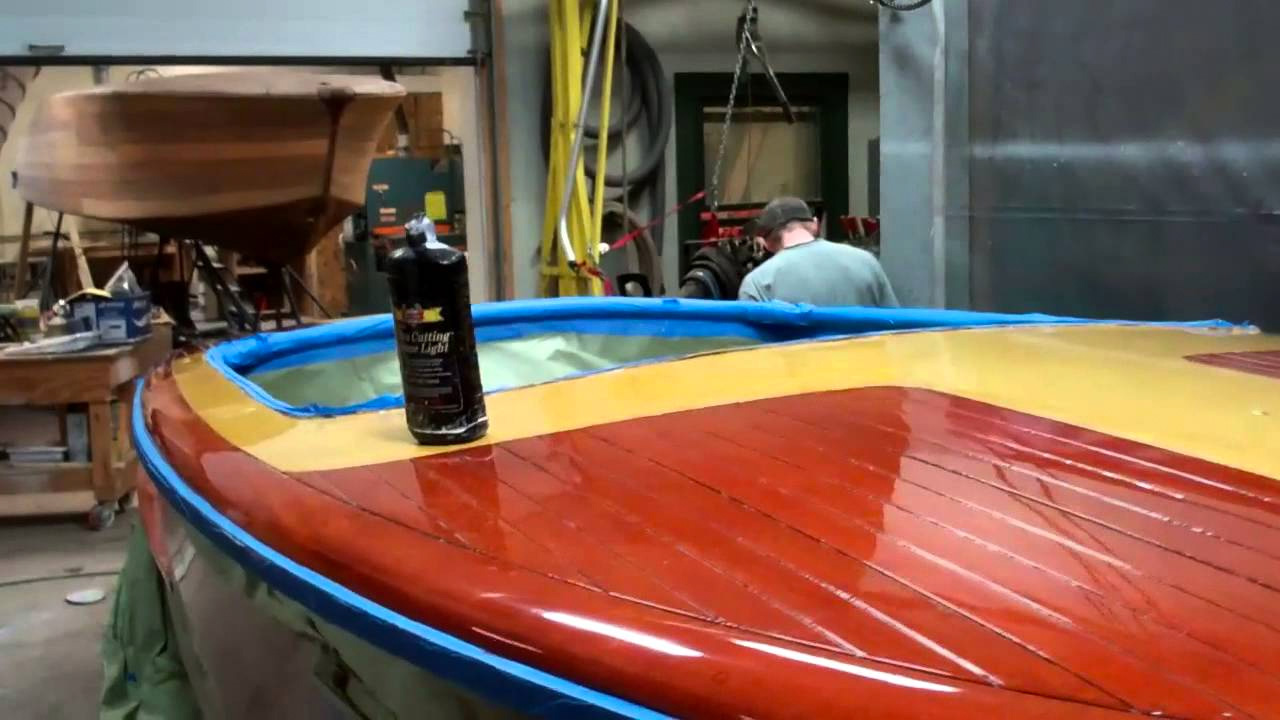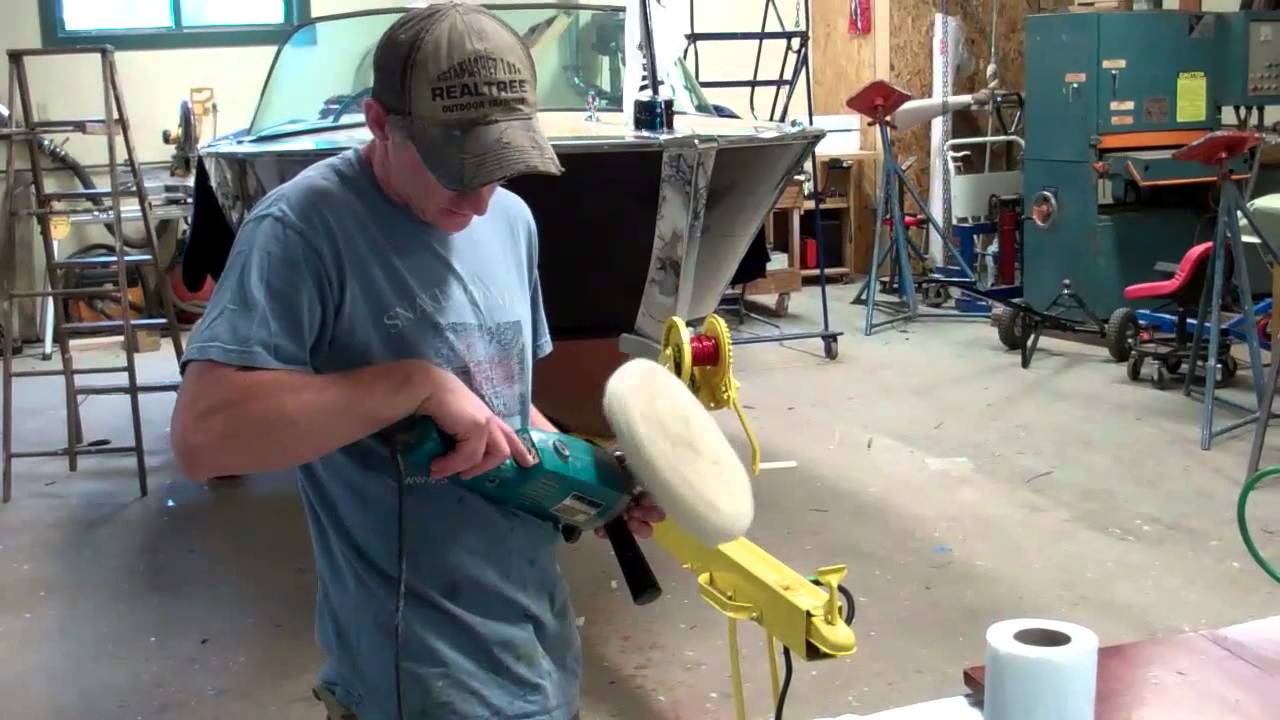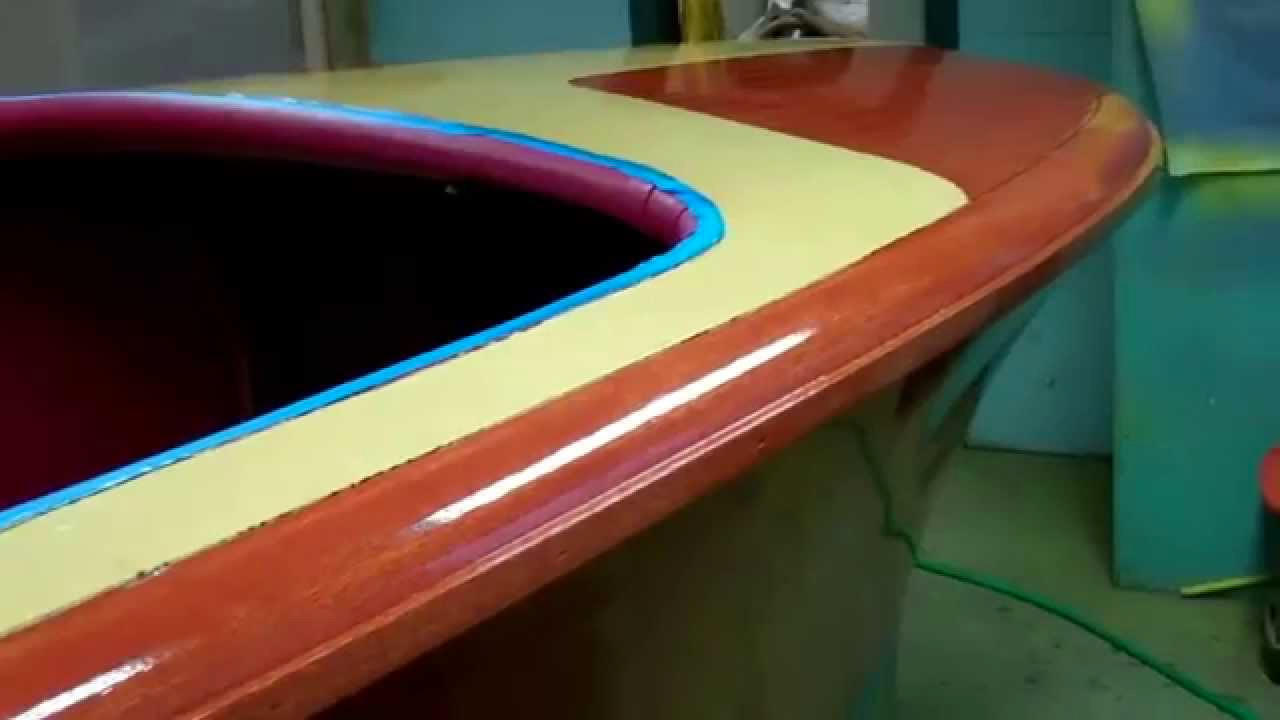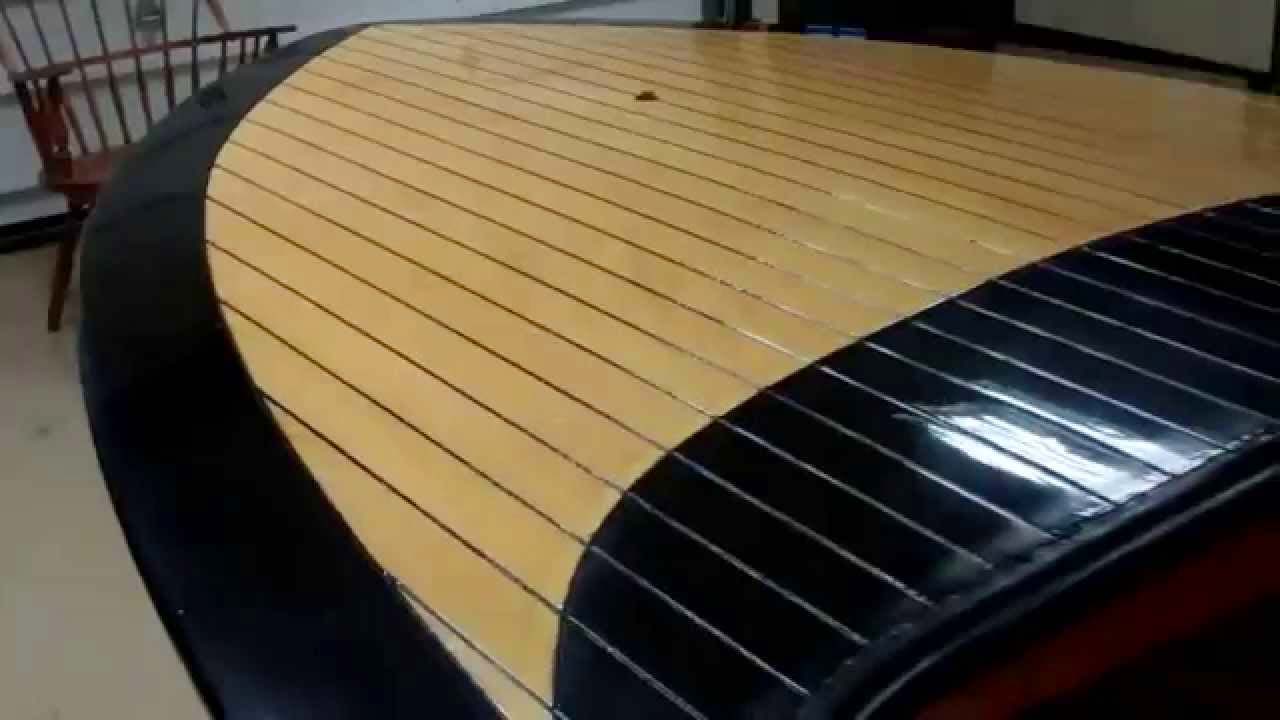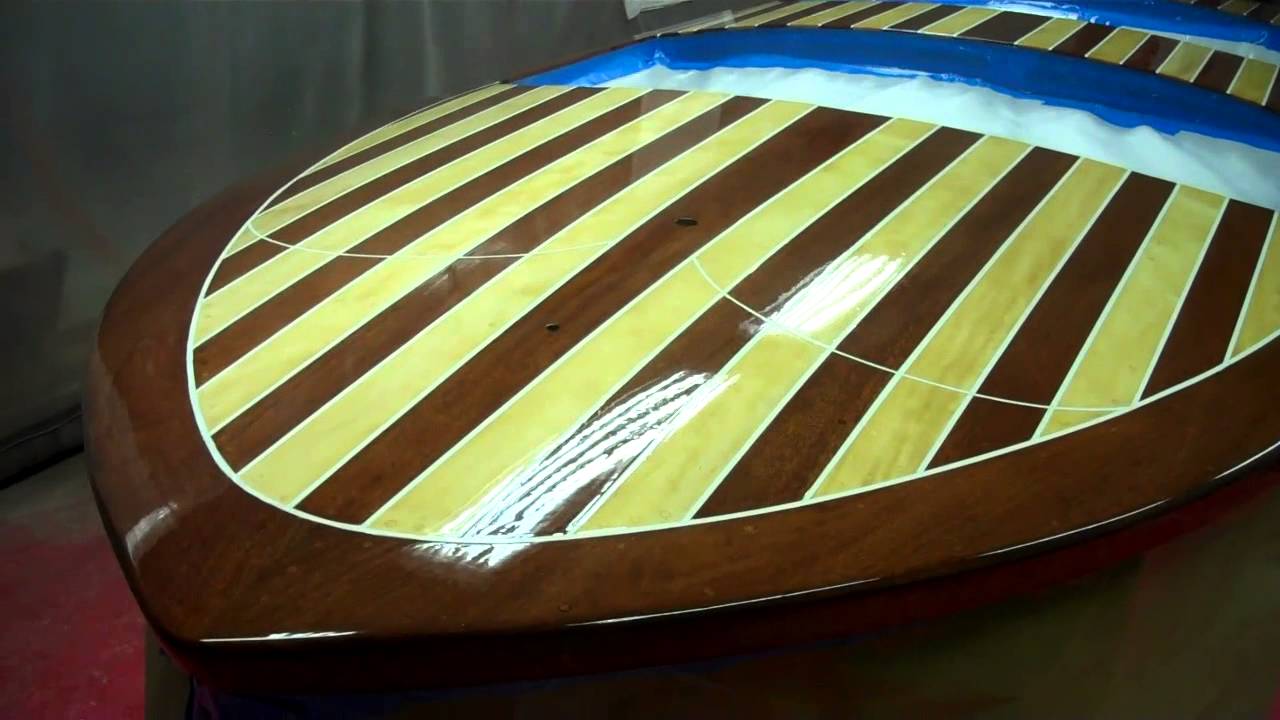With the entire hull sealed with three coats of clear penetrating epoxy sealer (CPES), one more milestone is fading in her wake.
No matter how many times we go through this bleach, stain, seal process, I still find myself unimpressed by the lusterless presentation that staining the hull delivers. But what will be a full-bodied, robust presentation, with a hint of luster that grows with each application and curing of CPES always produces smiles and exclamations, “Wow!”
The 1953 Shepherd is no different, as I suspect you will agree by comparing last week’s post-staining milestone video with this one.
Next we begin filling the deck seams. At least in 1953, Shepherd Model 110-S runabouts had a yellow filled circumferential seam that runs along the covering boards and across the engine bay bridge. The deck seams, by contrast, were open, with waterproofing achieved by filling the very bottom of each seam with a mahogany caulk. We will use mahogany Sikaflex for this purpose.
Here is a case of cure times dictating the pace of the project. We cannot wait to begin varnishing, but doing so before the Sikaflex has cured means going on a fool’s errand. We will wait a solid three days, and maybe four.
So it is seam-filling on Monday, which means we might roll and tip the first coat of varnish on Friday of the coming week.


